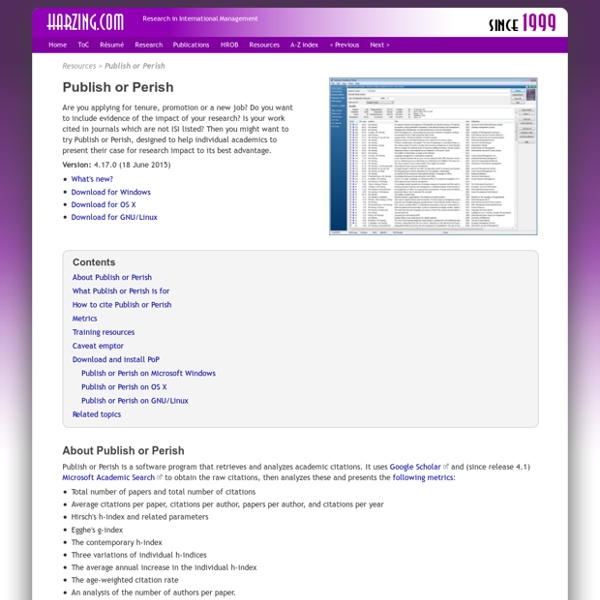Electronic paper
Electronic paper, e-paper and electronic ink are display technologies which are designed to mimic the appearance of ordinary ink on paper.[1] Unlike conventional backlit flat panel displays which emit light, electronic paper displays reflect light like ordinary paper, theoretically making it more comfortable to read, and giving the surface a wider viewing angle compared to conventional displays. The contrast ratio in available displays as of 2008 might be described as similar to that of newspaper, though newly developed displays are slightly better.[2] An ideal e-paper display can be read in direct sunlight without the image appearing to fade. Many electronic paper technologies can hold static text and images indefinitely without using electricity. Flexible electronic paper uses plastic substrates and plastic electronics for the display backplane.
Action Science Explorer (Formerly iOpener Workbench)
Latest News January 2012. Our paper on Action Science Explorer was accepted by JASIST, the Journal of the American Society for Information Science and Technology. See the Publications section below for more details. December 2011.
Scholar Citations Help
Google Scholar Citations provide a simple way for authors to keep track of citations to their articles. You can check who is citing your publications, graph citations over time, and compute several citation metrics. You can also make your profile public, so that it may appear in Google Scholar results when people search for your name, e.g., richard feynman. Best of all, it's quick to set up and simple to maintain - even if you have written hundreds of articles, and even if your name is shared by several different scholars. You can add groups of related articles, not just one article at a time; and your citation metrics are computed and updated automatically as Google Scholar finds new citations to your work on the web.
NoteSlate tablet review, specs, price, release date
Whether you are looking for cheap tablet ? This NoteSlate is well suited for you with price of $99 and will be release in June, 2011 with a variety of two-tone designs. With a choice of black or white backgrounds on the matte monochrome display, 4 different models with black backgrounds and blue, white, green, or red text and pictures.
Automatic Graph Layout
Microsoft Automatic Graph Layout (MSAGL), formerly known as GLEE, is a .NET tool for laying out and visualizing directed graphs. You can use MSAGL to represent complex directed graphs, such as those found in business management, manufacturing, and network analysis, as well as phylogenetic trees, which are used in bioinformatics research. MSAGL is now available for purchase at the Microsoft online store.
NoteSlate: the cheap digital notepad you’ve been dreaming off
If you’re not convinced it’s worth paying over 900 dollars for a 7 inch tablet that’s supposed to be optimized for taking notes like the ASUS EEE Pad Memo I think I’ve got just the right thing for you: the 13 inch NoteSlate tablet. It’s more of a digital notepad, where you can use your fingers or the included digital stylus to take notes, store them, listen to some MP3 players and nothing else. There’s a small price to pay for such a cheap device: 99$ for the first version.
Comparison of reference management software
The following tables compare reference management software. General[edit] In the "notes" section, there is a difference between: Operating system support[edit] In the case of web applications, this describes the server OS.
BPhone Combo Tablet with Phone
Webmaster please contact support@hostgator.com Skyenne.com Most Popular Saturn Sky The Sky Blue Sky
Citation Management Tools
Definition: Citation management tools enable researchers to capture bibliographic information about research materials, create bibliographies, add footnotes, and manage research collections. Some citation management tools also make it easy to share references with other researchers. Tools: BibDesk: "BibDesk is a graphical bibliography manager for OS X, providing powerful BibTeX file management for Mac users."
Web of Science Help
A Citation Map is a graphical representation that shows the citation relationships (cited references and citing articles) between a paper and other papers using various visualization tools and techniques. Using citation mapping, you can analyze which researchers are citing your papers. You can also choose to organize and color code the results by author, year, journal title, subject category, and more. You can also set up a graphical representation of the papers that you have cited in a published work. You can then choose to organize and color code the results by author, year, journal title, subject category, and more. Creating a Citation Map



